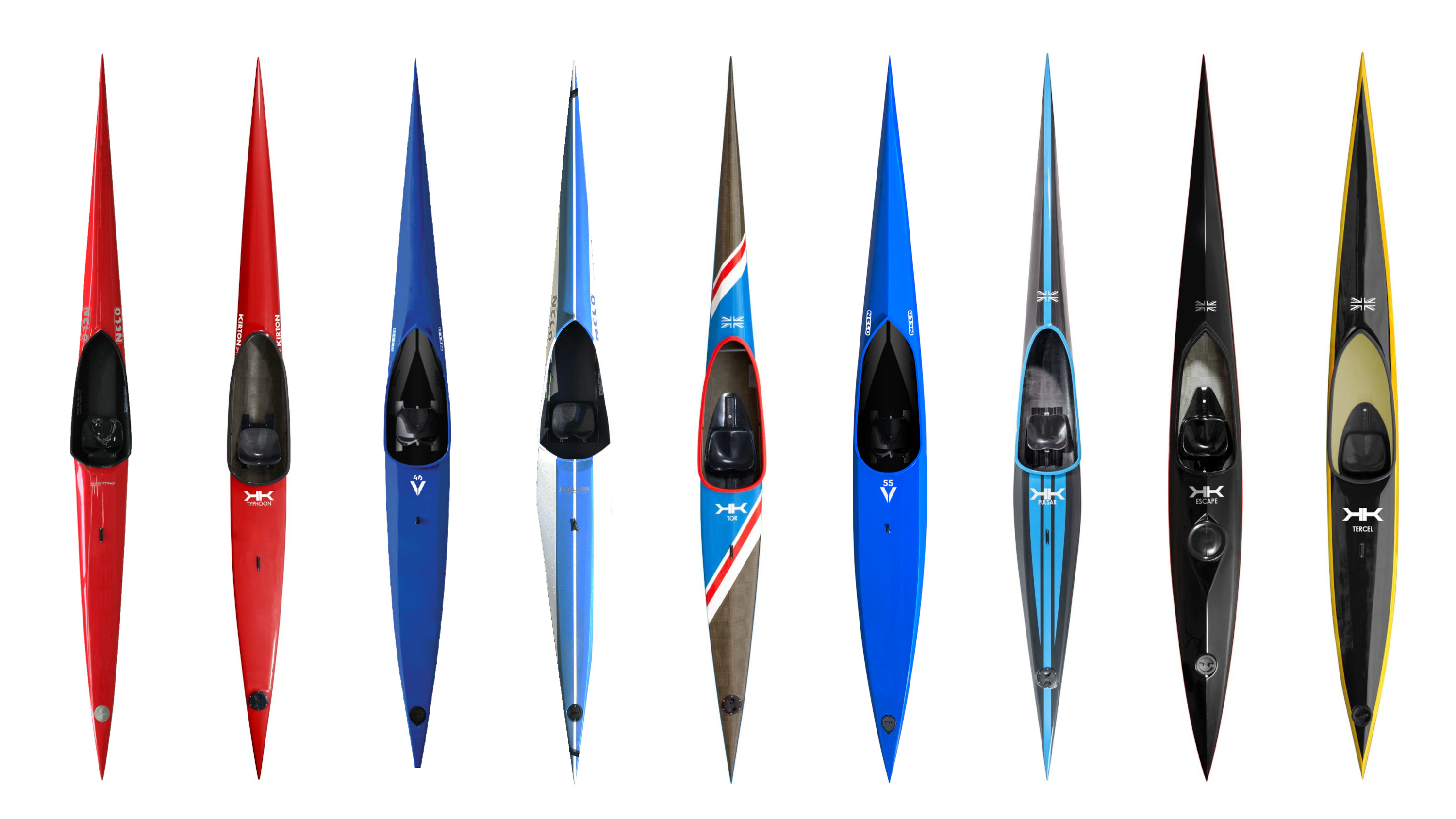
The data in the table below gives (manufacturer) specifications for a selection of kayaks and canoes. The data were originally compiled from two sources:
- a document shared by the Worcester Canoe Club and
- the racing boat data published by Purple Paddler.
The data has been revised and expanded to include other manufacturers and more recent models. It has also been cleaned to some extent, but there is still work to be done. Please let me know if you spot any errors or omissions.
Dimensions
The principle dimensions for a canoe or kayak are:
- length (L)
- width or beam (W) and
- depth (D).
Maximum boat length depends on type:
- K1 — 5.2 m
- K2 — 6.5 m and
- K4 — 11.0 m.
Stability
The stability of a kayak is intimately linked to its potential speed. A faster boat will generally be less stable. A more stable boat will normally be slower. But, of course, the skill of the paddler will also influence the likelihood of taking a swim.
Stability depends on a few factors including
- length
- width (or beam)
- hull profile (rocker and beam).
But, that’s not all. There are also two different types of stability:
- primary stability — How much does the boat resist tipping from an upright position?
- secondary stability — Once started to tip, how much does the boat resist rolling over?
It’s all rather complicated. Fortunately, however, there’s a single number, the stability rating, which indicates a boat’s stability. Well, in principle. In practice though, this number can often be somewhat contentious, with a boat’s “theoretical stability” (as published by the manufacturer) being different to it’s “effective stability” (as perceived or calculated by paddlers).
The stability rating is a number between 0 and 10, with 10 the most stable and 0 the most tippy.
I was not able to find stability data for a number of boats. In some cases I have sourced or generated estimates. Estimated stabilities are indicated by a grey background. Modelled stabilities are indicated by a blue background.